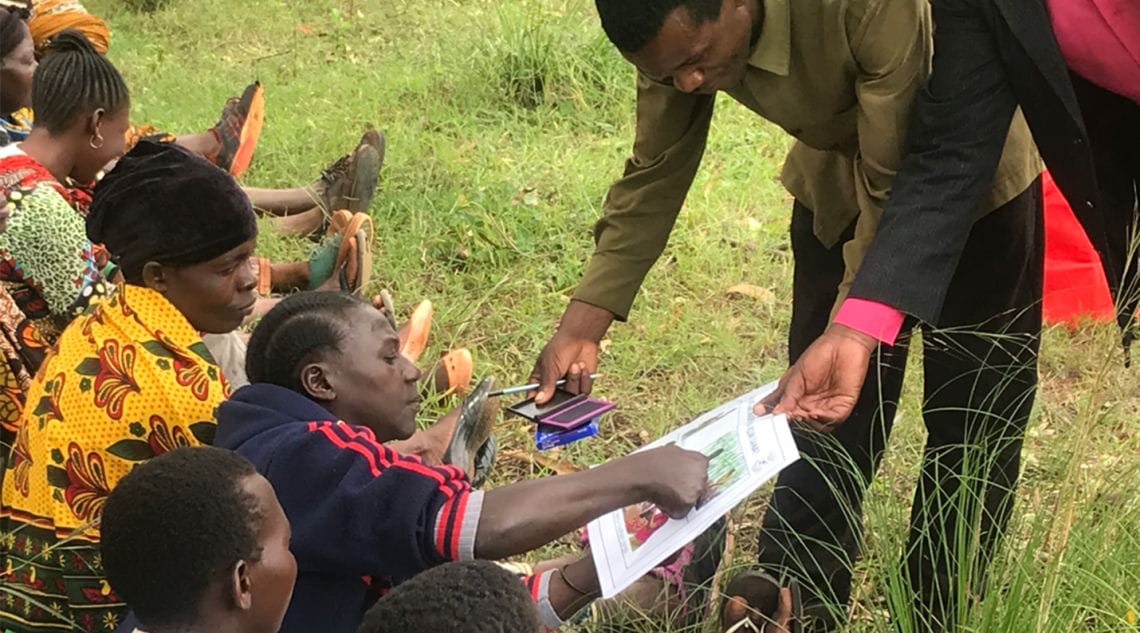While the widespread adoption of cash transfer programs is a significant step in reducing global poverty, innovative solutions are needed to improve their efficiency. Since 2015, ideas42 and the World Bank have worked together to bring behavioral innovations to cash transfer programs. Most recently, we’ve been working with the governments of Kenya, Tanzania, and Madagascar to create behaviorally informed components to integrate into existing cash transfers and better equip beneficiaries to make the most out of their cash payments. Promising results from our most recent tests suggest that providing opportunities for beneficiaries to set goals and make plans for using their cash before the transfers may help them spend the cash on productive investments and generate income in the future, creating a path out of poverty.
Through interviews with people on the ground in each context, we learned how beneficiaries make decisions about the cash they receive and what barriers stand in the way of their reaching savings or investment goals. For example, it is easy for beneficiaries to make consumption purchases just after they receive their cash. They often have immediate needs, and the presence of market vendors makes it all the more likely that they will spend their cash on other on-the-spot purchases. When beneficiaries have an opportunity to affirm their longer-term goals and plan how much they want to save before receiving the cash, it is easier for them to follow through on their plan and achieve their goal.
Based on such insights, we created packages of behaviorally informed designs that were adapted to fit the specific contexts in each of the three countries. Each package consisted of an activity in which beneficiaries selected a realistic goal and then pasted a reminder sticker on a card they would keep with them, and a plan making activity in which beneficiaries circled the amount they would need to save from each transfer to achieve their goal. To support the beneficiaries in acting on their plans right away, they were provided with a savings pouch to separate the cash they intend to save immediately when they receive it. Additional insights we gained from creating these context-specific interventions can be found in a free checklist we developed for cash transfer program designers.
The results from early randomized tests are promising, and the designs are creating an even stronger effect than we expected after only one to two months. In this short time frame, beneficiaries in Kenya and Tanzania were 9% and 3% more likely to report having a productive goal they planned to put their cash transfers toward. Beneficiaries in Tanzania and Madagascar who received our behavioral intervention were 13% and 46% more likely to report having saved, respectively. In Kenya, people reported saving more money. Those who received the behavioral treatment reported saving 41% more than those who received just their usual cash transfer payment. Beneficiaries in Kenya who had borrowed money were also 45% more likely to completely repay existing debts– which could suggest that they are making financial decisions in preparation to save or make productive investments.
What’s especially exciting about these initial results it that in Tanzania we found that beneficiaries who received the behavioral intervention were 9% more likely to report making a productive investment, such as buying livestock or supplies for a small business. We expected it would take numerous cash transfers and many months for individuals to save enough to make such an investment purchase that can have an outsized impact on their financial health and wellbeing in the long term.
While we are still collecting data and running longer-term tests, we are encouraged by these promising preliminary results. They suggest that behavioral science can help address challenges that hinder cash transfer beneficiaries from shifting their all of their spending from immediate needs to planning for longer-term investments- a critical step on the path out of extreme poverty and into a stable financial future for themselves and their families. Insights from these programs are strengthening the case for light-touch, low-cost interventions built into cash transfer programs as a way to significantly amplify the benefits of such an important poverty-fighting tool.
More details about incorporating evidence-based behavioral insights into cash transfer programs can be found in our new policy brief, Cash and Change: Using Behavioral Insights to Improve Financial Health in Three Cash Transfer Programs.
Please contact us directly at livelihoods@ideas42.org to learn more or with any questions.



